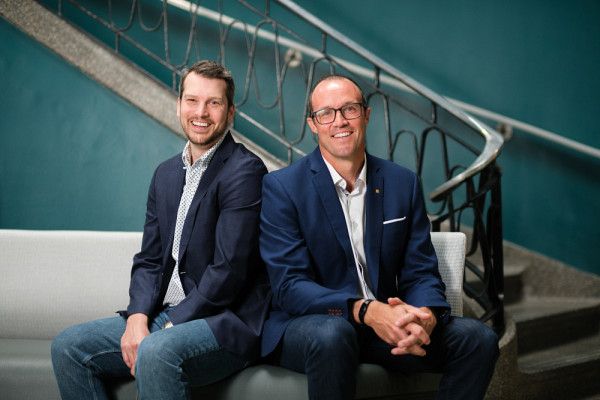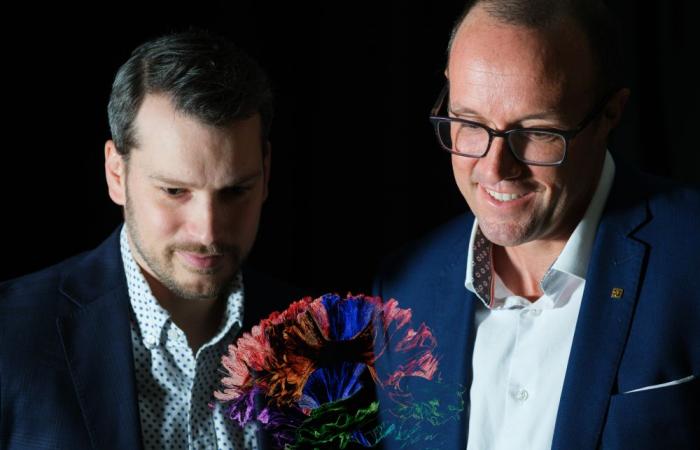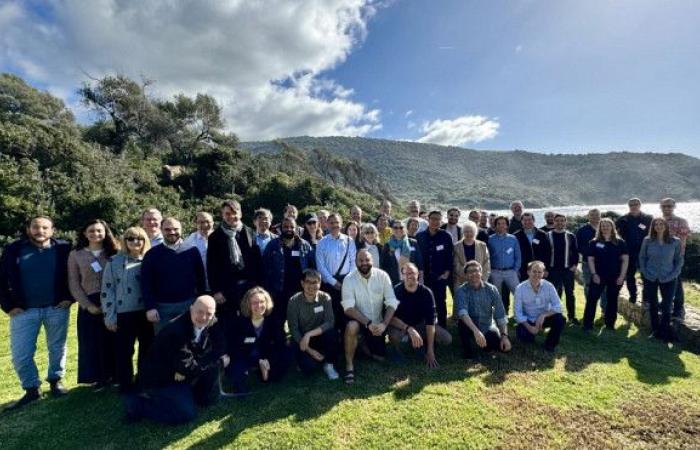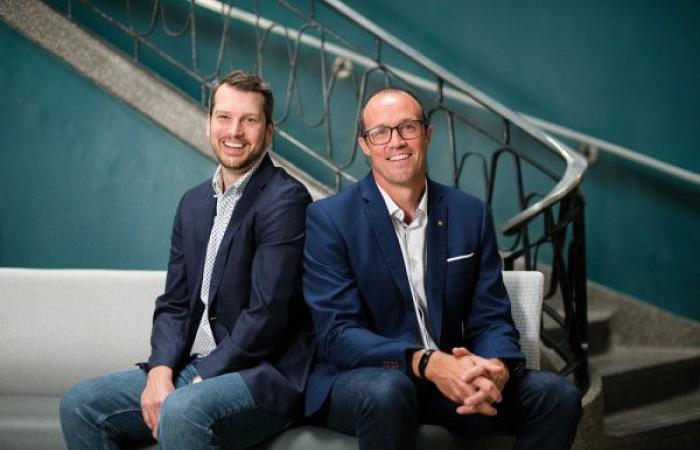Photo: Michel Caron – UdeS
The creation of a learned tractography society led at the UdeS by Professor Maxime Descoteaux will accelerate discoveries and knowledge in imaging brain connectivity.
Knowledge of the anatomy and functioning of the human brain has made enormous progress in recent decades, but several mysteries remain. One of the tools used to understand how the brain is made and in particular how it is connected is tractography. It is a medical imaging technique that creates three-dimensional images of the major communication pathways in the brain, the connection networks or the “connectome”.
This tool in development could enable great advances in science and medicine, since the images could help us better understand and identify pathologies, such as Alzheimer’s, multiple sclerosis or mental health disorders. In order to accelerate discoveries and knowledge sharing, research specialists have decided to come together. At the initiative of Professor Maxime Descoteaux, a new learned society bringing together experts in the field was created in June 2024: the International Society for Tractography.
A learned society is a university or professional organization bringing together people who are experts and passionate about a specific field, promoting research, the exchange of knowledge and the promotion of advances in this field.
Photo: Michel Caron – UdeS
For the first time, we want to bring together experts around the subject of brain tractography. One of the objectives of the learned society is to better train and communicate research, in order to have its advances adopted in industry and in the clinic. We want to create a platform for collaboration, knowledge exchange, training of future tractologists (radiologist specializing in tractography) and development of tractography.
Professor Maxime Descoteaux
A first step taken
It was in Corsica in March 2024 that the first milestones of the International Society of Tractography project were placed. Fifty experts from around the world gathered to discuss the future of tractography. People from the fields of imaging, neuroanatomy, clinical and other related disciplines met to discuss tractography algorithms and their applications in health sciences, particularly for the diagnosis and treatment of diseases .

Photo: Provided
At the March meeting, we discussed the company’s goals and how we see the future of tractography. Historically, great things have been accomplished in such consortia, and the international collaborations led by the company will lead us toward concrete advances in human brain health. For example, the European Organization for Nuclear Research (CERN), founded in 1954, played a crucial role in the advancement of modern science by leading the Large Hadron Collider project, which led to the discovery of the Higgs boson in 2012, thus confirming fundamental predictions of the Standard Model of particle physics.
Laurent Petit, Director of Research at the National Center for Scientific Research, University of Bordeaux, co-founder of the learned society
Towards an observatory of structural connectivity of the brain
Photo: Michel Caron – UdeS
One of the projects of the International Society for Tractography is notably to create a virtual observatory of brain connectivity, i.e. a platform and a network of researchers sharing their data and virtual dissections, in order to increase the possibilities of navigation, questioning and exploring the anatomy of the brain and its functions.
We want to operate a bit like space observatories: international telescopes share their data through global partnerships and collaborations that aim to maximize the use of astronomical resources. These initiatives provide researchers around the world with access to data, furthering scientific discovery and innovation. For brain data, to date, the information we have is fragmented. With a virtual brain connectivity observatory, we will be able to compare data from around the world and understand how our brains are similar and different depending on a plethora of factors, such as environment, culture, language, gender, age and, of course, certain diagnoses.
Professor Flavio Dell’Acqua, King’s College London, United Kingdom, co-founder of the learned society
According to co-founder Alexander Leemans, the company offers a perfect context for advancing knowledge and training highly specialized personnel:
A learned society allows us to share knowledge, but also encourages us to confront new ideas and ways of doing things. Also, training within the company is important: we will train radiologists specializing in tractography in order to advance personalized medicine.
Professor Alexander Leemans, University Medical Centre Utrecht, Netherlands, co-founder of the learned society

Photo: Michel Caron – UdeS
The company encourages unique knowledge sharing and multidisciplinary collaborations:
The company will train a new generation of researchers and experts who will advance the field of tractography. By taking part in the society, scientists and clinicians of the future will be able to communicate, support each other and collaborate with industry partners and many global experts in neuroanatomy, tractography algorithm development and clinical applications.
Graham Little, Ph.D., postdoctoral fellow and co-founder of the learned society
The International Society of Tractography aims to ultimately recruit more than 2000 members.
A search that rises to the power of ten!
It is no coincidence that the University of Sherbrooke stands out in research. His secret? The judicious marriage of partnership, pooling and interdisciplinarity, three strengths for which it is renowned. Learn more about what propelled UdeS 10e in research in Canada.









